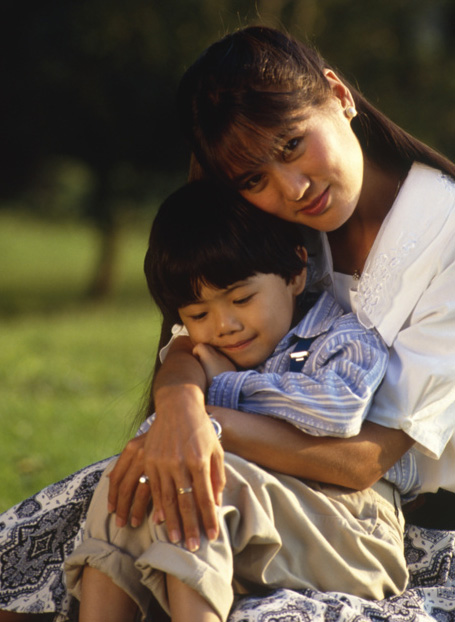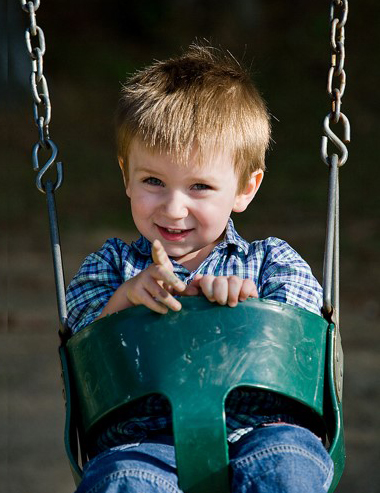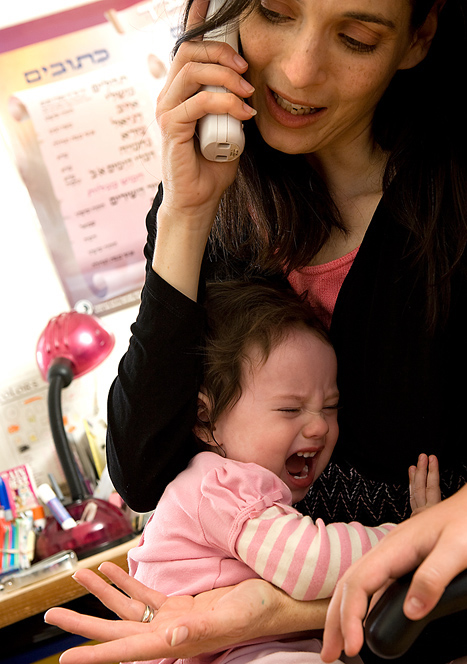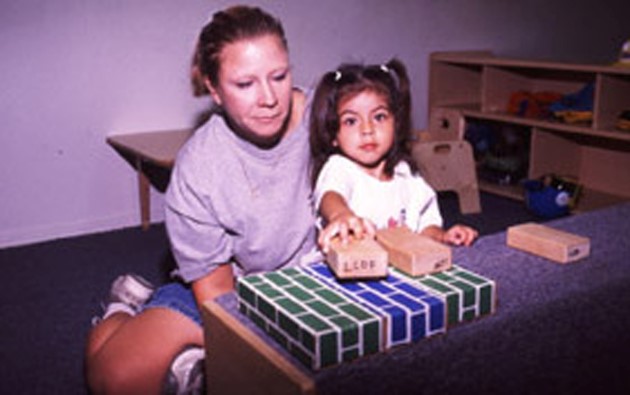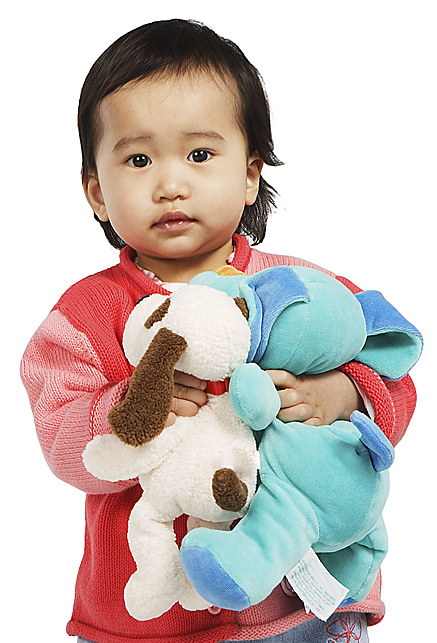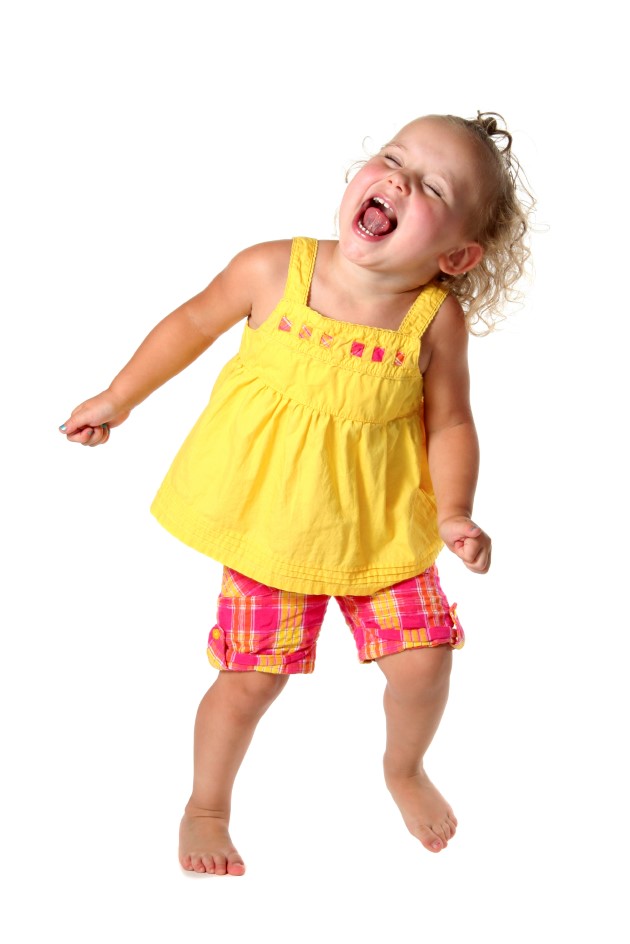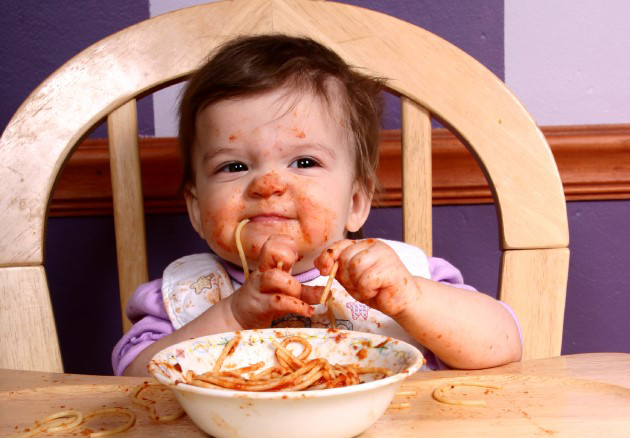
Toddlers are messy eaters. You can bet that a lot of food will end up on the floor. If you are worried about the carpet or floor, put an old sheet or tablecloth under the high chair. You can shake it out after meals. When it gets really dirty, you can wash it.
Things that make eating easier for your toddler are small items that won’t break, such as a:
- Spoon with a short handle.
- Bowl with sides to push food up against.
- Cup that your toddler can circle his hands around and pick up. This cup shouldn’t tip over easily. If you use a training cup with a lid, it can make drinking easier.
There will be lots of spills. Most of the time spills will be accidents. If it happens three or four times in a row, your toddler might be playing or trying to get your attention. This means it is probably time to end the meal.
Serve your toddler food at the same time everyone else is eating. Your toddler will learn how to eat by watching you and other family members eat. Don’t expect good table manners yet. Your child will learn these over the next few years.
A high chair can help. Toddlers are such busy little people they might not want to stop to eat when it’s time for a meal or snack. When you put your child in a high chair, he knows that it’s time to stop what he is doing and eat.
You may feel like you never have a moment for yourself. If you’re feeling stressed out, find some time just for you. Trade babysitting with another parent, or trade a service like cooking a meal in return for a few hours of baby-sitting.
Here are some ideas for “refreshing” yourself :
- Take a bubble bath, a walk, or a swim, see a movie, or read a book.
- Plan your future. Look for classes you might take, jobs you might like, things you would enjoy.
- Spend time with a friend — without children.
- Talk to someone about the stress you feel and what you might do to reduce it.
The time you take just for yourself will help you feel better — and ready to face parenting again.
